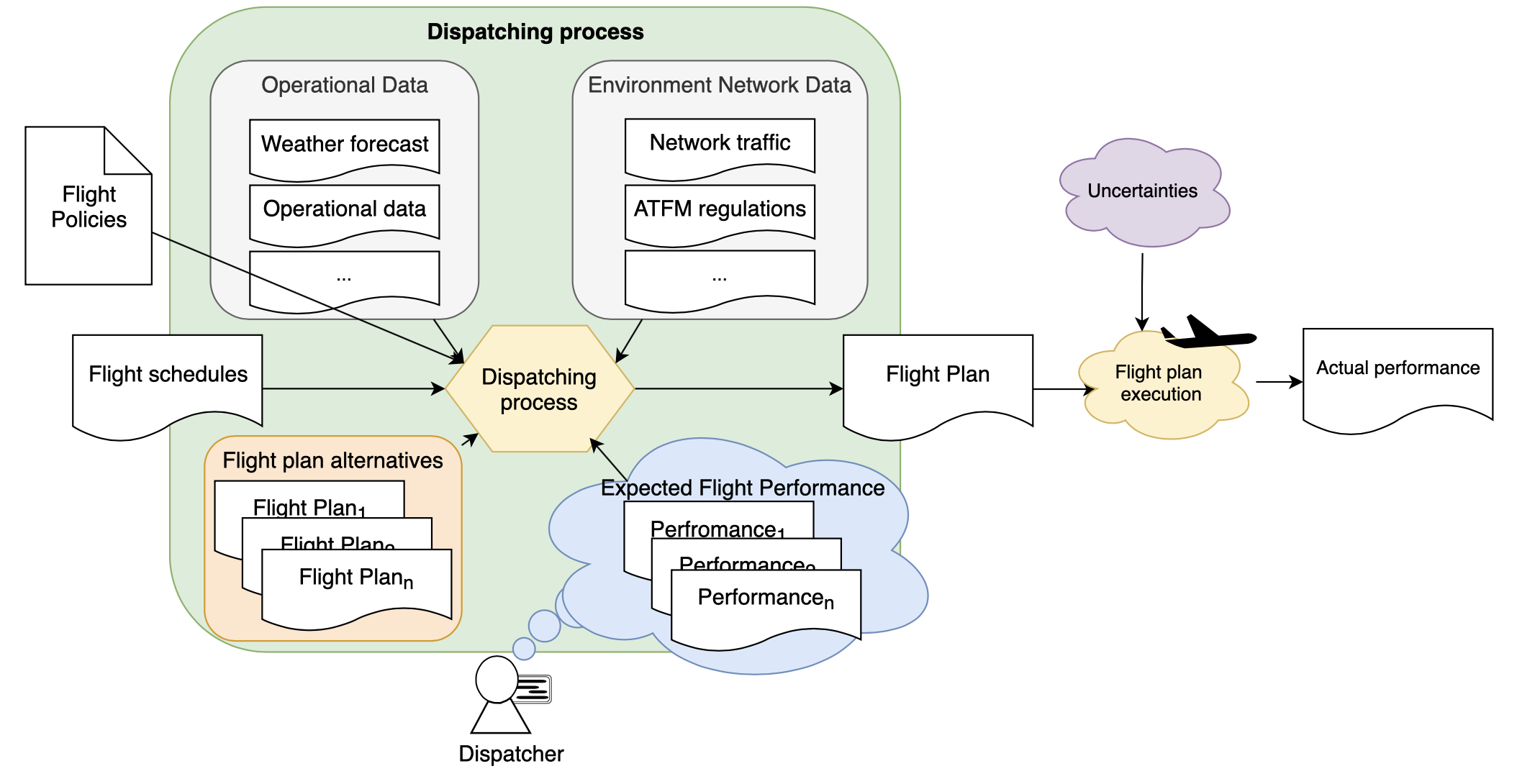Dispatcher3: Data at the core of flight dispatching

Author: Luis Delgado (UoW)
An experienced dispatcher will have a good understanding on the differences between planned and executed flight plans. These differences will be driven by uncertainty factors such as, which runway is the one that will be used at arrival, what is the actual weather that the flight will experience, or how much delay will the flight experience as holding at the arrival. Besides safety aspects, dispatchers will therefore consider the operational environment and constraints (such as flight date and time, network congestion or route availability), the situation of the airline fleet (e.g., delays) and performance indicators (cost and on-time performance) to select the most suitable flight plan: route, profile and cost index.
Some of these aspects can be automatised by using advanced flight dispatching and planning tools, but having a good understanding of the expected discrepancies between planned and realised, and of the precursors for these variations is key to produce robust and efficient solutions.

Current flight plan dispatching processes
Dispatcher3, an Innovative Action within the frame of CleanSky 2 ITD System, will provide an data infrastructure to lever on historical data and machine learning techniques to systematically estimate these variability between planned and executed flight plans.
Dispatcher3 is led by the University of Westminster (UoW) in collaboration with Fundacion Insituto de Investigacion Innaxis, the Universitat Politècnica de Catalunya (UPC), Vueling Airlines, PACE Aerospace Engineering & Information Technology and the ANSP skeyes. The Topic Manager is Thales AVS France SAS.
This project focuses on the activities prior departure and it aims at supporting dispatchers, pilots and the strategic scheduling process
- Dispatchers will benefit of
- predictions of the expected actual performance of flight,
- advice on the flight plan design and selection process, and
- identification of the precursors of the different variations between planning and execution.
- The flight crew will obtain
- information on the expected variance between the flight plan and the execution, and
- qualitative advice on some flight operations.
- Schedule planners will count with an infrastructure able to identify which flights are systematically prone to variations between schedules and execution blocks requiring the need of further assessment.
Dispatcher3 is organised in three layers:
- Data infrastructure: Powered by DataBeacon (a multi-sided, open source, data storage and processing platform). Providing private environments, secure data frames, the full-stack AI environment, and a scalable infrastructure;
- Predictive capabilities; with two different modules:
- Data acquisition and preparation: with a first phase of data wrangling and a second step of descriptive analytics.
- Predictive model: consisting on target variable labelling and feature engineering and training, test and validation of machine learning models.
- Advice capabilities: producing specific advise to users: dispatchers, pilots and schedule planners.

Dispatcher3 process
Dispatcher3 will consider datasets available within airlines, but also analyse which datasets are currently not accessible but which could benefit these predictive capabilities. This quantification on the predictive improvement will help to identify which multi-stakeholders collaborations should be established.
See http://www.dispatcher3.eu/ for more information on the project.